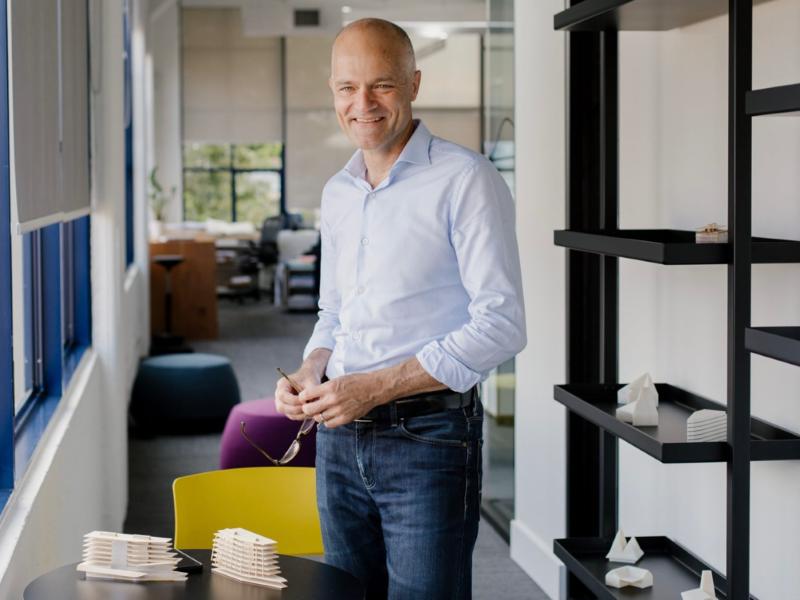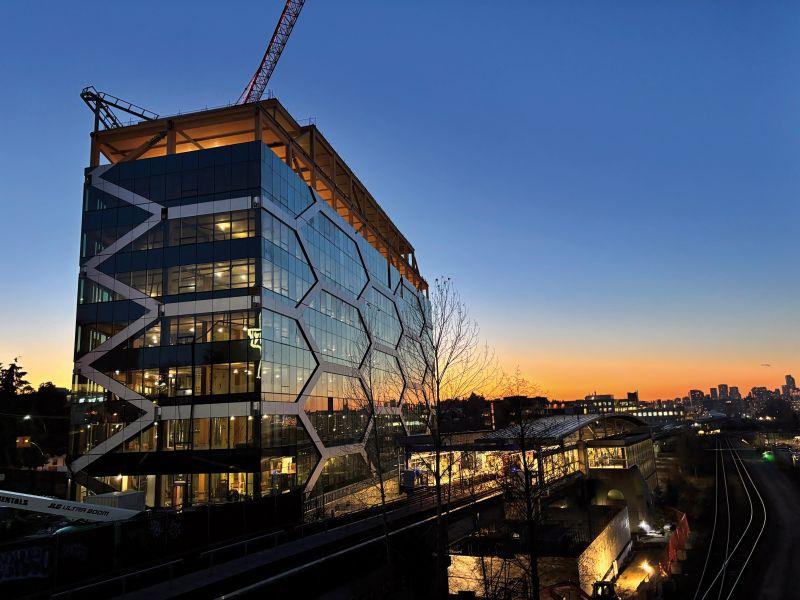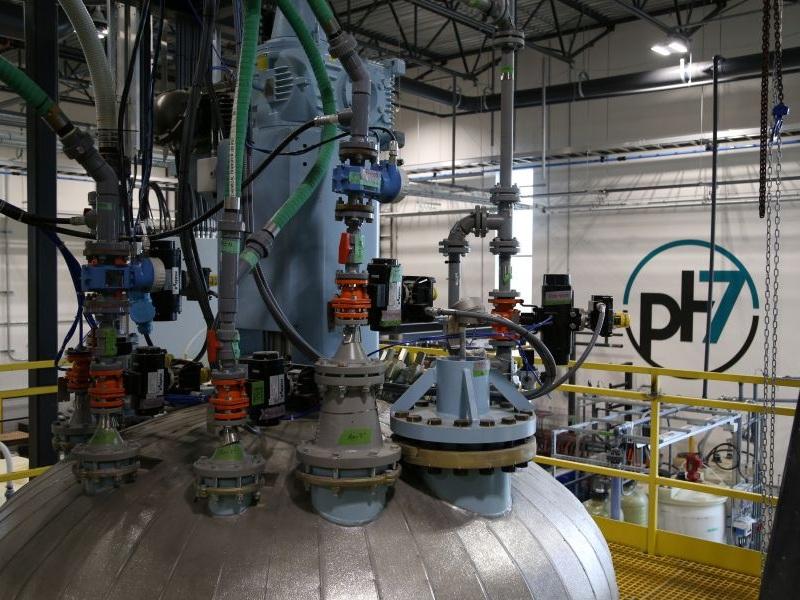
An architect and engineer behind some of Canada’s most iconic mass timber buildings has high hopes for the material as a sustainability enhancer and a boost to the country’s economy.
Martin Nielsen, a partner at Calgary-based DIALOG, is an advocate for the engineered wood product that is made by gluing lumber into panels. His mass timber portfolio includes the University of British Columbia’s Centre for Interactive Research on Sustainability (CRIS) and its Campus Energy Centre, the 10-storey office building The Hive being built in Vancouver, and the Brentwood and Gilmore Skytrain stations.
Quoting one of his former bosses, Nielsen said timber is a natural and renewable material, “the only building material made by the sun.” Mass timber also traps carbon, he noted in an interview with Sustainable Biz Canada, presenting a way for the building sector to offset its greenhouse gas emissions.
People are even happier in a wood building, Nielsen added, echoing research that found when people see wood in a building it lowers a key stress hormone. He also envisions it as a way to support Canada’s forestry industry amid shaken-up trade with the U.S.
“We don’t have to use concrete, and we can be sustainable, and we can drive our economy.”
Sequestering carbon, supporting Canada's lumber industry
Nielsen’s interest in working with mass timber stems from his desire to tackle the problem of carbon emissions resulting from building materials. Known as embodied carbon, it is thought to contribute 10 per cent of all energy-related emissions globally, according to a United Nations report.
Mass timber provides one solution as it serves as a carbon sink, trapping carbon dioxide (CO2) from the atmosphere as wood.
Natural Resources Canada says maximizing the use of mass timber in construction in the country could remove an estimated 600,000 tonnes of CO2 from the atmosphere per year by 2030. The Environmental and Energy Study Institute cites research that found building with mass timber instead of concrete and steel could reduce the emissions associated with building materials by 13 per cent and up to 26.5 per cent.
The material is also flexible and could increase domestic demand for Canada and British Columbia’s multibillion-dollar forestry industry, Nielsen said. A report by the RBC Climate Action Institute found greater use of mass timber in building construction could "conservatively grow" the mass timber market by $1 billion by 2030.
“We could just stop selling our softwood lumber across the border," Nielsen said. "Imagine if we just switched over to wood as our solution for everything.”
Canada's mass timber projects
Mass timber as of late has been increasingly sought after by Canadian builders and developers who are drawn to its sustainability.
Nielsen is seeing its use increase across Canada, driven by policies such as British Columbia’s Wood First Act that requires “the use of wood as the primary building material in all new provincially funded buildings.” The wood industry and federal government are also supporting poster-child projects “trying to do something radical, something unique, something good,” he added.
“It was initially the higher-ed and municipalities – public money – that was being pushed in that direction . . . but now we’re seeing the residential side uptake,” Nielsen said.
Within the institutional sector, there is the University of British Columbia’s CRIS, a LEED Platinum-certified building packing a litany of green features. Approximately 600 tonnes of CO2 is trapped in the mass timber that comprises the building.
As for residential buildings, there are upcoming projects such as Intelligent City’s nine-storey building set to be built piece by piece from a factory in British Columbia for a site in Toronto, and Adera Development Corporation’s stacked townhome community Kestrel in West Coquitlam.
'A eureka moment' on high costs

Despite its benefits, mass timber is not a flawless material. Moisture is a hindrance during construction, Nielsen said, and cost remains a significant hurdle to its adoption. The 2023 Mass Timber Construction Report found a premium for a mass timber project that ranges up to 15 per cent.
The Climate Smart Buildings Alliance noted the high insurance rates on wood-frame buildings that are between six and 10 times higher than for steel and concrete structures, which contributes to the economic barriers.
However, there are ways around the problem. Nielsen pointed to a a hybrid structural system DIALOG is using at its project for Wesgroup Properties’ River District Parcel 19.1. Instead of wood columns, DIALOG is using steel columns for the point-supported cross-laminated timber. Thus, DIALOG was able to come in with a budget under the cost of an equivalent concrete building.
“This is kind of a eureka moment in my career,” he said about the cost competitiveness of River District Parcel 19.1.
Woodrise forum in Vancouver
To discuss the early innovations of mass timber in British Columbia, Nielsen will be joining a panel at the Woodrise event on Wednesday, where he plans to discuss the effort behind the Skytrain stations and CRIS.
Woodrise is an event for industry professionals to learn about timber construction and sustainable building practices. It marks his first time at the conference, which is being held in Vancouver this week.
When looking to the future of mass timber buildings, Nielsen is eagerly anticipating what will emerge out of the new Build Canada Homes agency.
Among the key tenets of the federal initiative to support housing affordability are efforts to seek out and support innovative construction methods such as factory-built housing, and prioritize Canadian-made materials including mass timber.
“I think that we are going to see a whole other level of innovation come out of this program,” he said.










